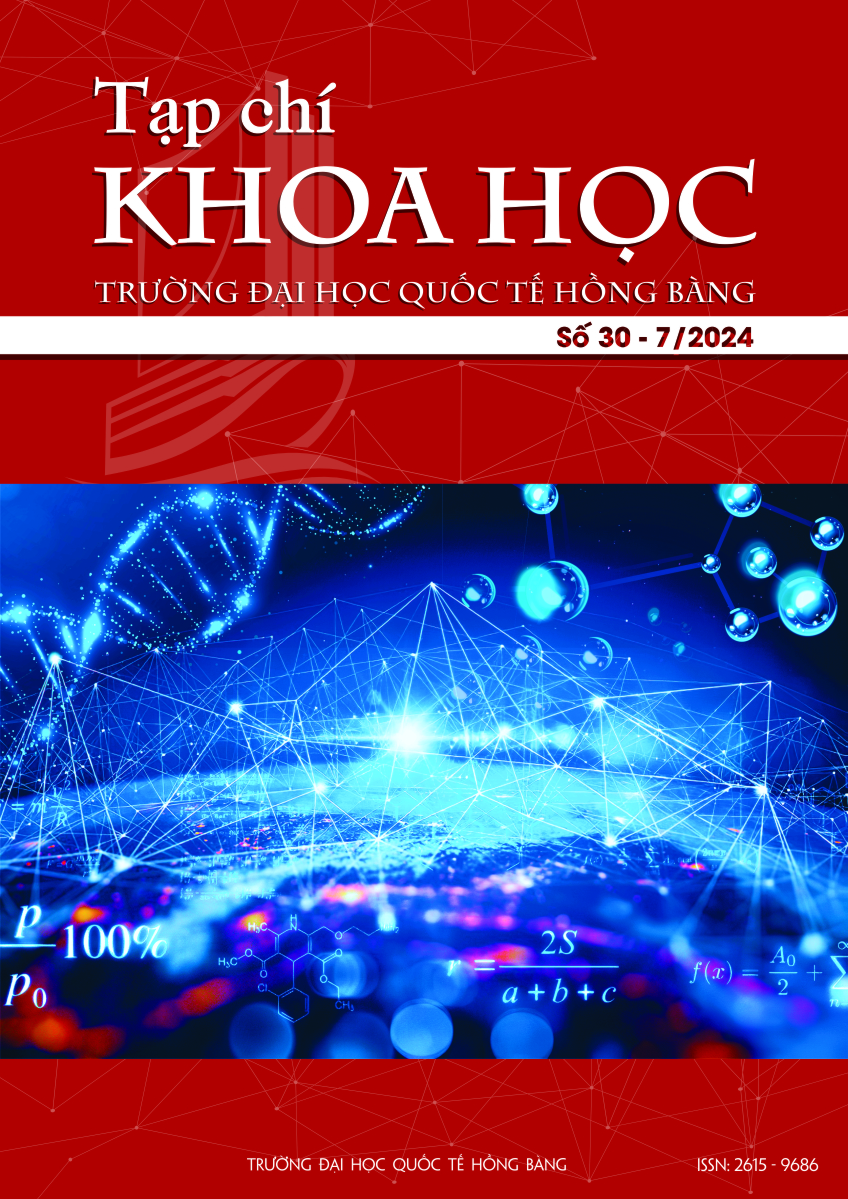Áp dụng phương pháp lồng ghép Service Learning trong giảng dạy truyền thông
Các tác giả
DOI: https://doi.org/10.59294/HIUJS.30.2024.648Từ khóa:
Service Learning, phục vụ cộng đồng, học tập trải nghiệm, giảng dạy truyền thôngTóm tắt
Học tập phục vụ cộng đồng (CSL: Community Service Learning) là một phương pháp mang đến cho sinh viên cơ hội tham gia vào các dịch vụ đáp ứng nhu cầu cộng đồng, vừa phản ánh trải nghiệm học tập trên lớp và nâng cao ý thức công dân. Theo đó, sinh viên được làm việc, tiếp xúc với các cộng đồng khác nhau khi tham gia dự án. Bài viết này chia sẻ cách áp dụng Service Learning trong đào tạo sinh viên ngành Truyền thông, Quan hệ công chúng tại Trường Đại học Kinh tế - Tài chính Thành phố Hồ Chí Minh. Kết quả nghiên cứu này giúp các giảng viên xác định được năm định hướng trong Service Learning khi đảm nhận vai trò giảng viên hướng dẫn cho sinh viên.
Abstract
Community Service Learning (CSL) is an approach to teaching that provides students with opportunities to engage in services that meet community needs while reflecting on classroom learning experiences and enhancing civic awareness. Through this approach, students work and interact with various communities as they participate in projects. This study discusses the application of Service Learning in training students in the fields of Communication and Public Relations at Ho Chi Minh City University of Economics and Finance. The findings of this study assist faculty members in identifying five orientations in Service Learning when assuming the role of instructors guiding students.
Tài liệu tham khảo
[1] Trần Thị Hường, Nguyễn Thị Kim Nhung và Nguyễn Thị Ưng, "Nghiên cứu về ảnh hưởng của phương pháp dạy học tới hoạt động học tập của sinh viên trường đại học Nông Lâm Bắc Giang," Tạp chí Giáo dục, vol. Số Đặc biệt, no. 3, pp. 297-301, 5 2019.
[2] D. C. Berliner, "Describing the Behavior and Documenting the Accomplishments of Expert Teachers," Bulletin of Science, Technology and Society, vol. 24, no. 3, p. 200–212, 2004.
DOI: https://doi.org/10.1177/0270467604265535[3] Nguyễn Thành Long, Kĩ năng học đại học và phương pháp nghiên cứu, Hà Nội: NXB Giáo Dục, 2008.
[4] Nguyễn Hữu Dũng, "Mô hình gắn kết giữa trường đại học với doanh nghiệp trong đào tạo đại học ở nước ta," Tạp chí Cộng sản, 2018.
[5] R. Kiely, "A Transformative Learning Model for Service-Learning: A Longitudinal Case Study," Michigan Journal of Community Service Learning, pp. 2-22, 2005.
[6] A. K. Ericsson, "The Influence of Experience and Deliberate Practice on the Development of Superior Expert Performance," in The Cambridge Handbook of Expertise and Expert Performance, New York, Cambridge University Press, 2006, p. 683-703.
DOI: https://doi.org/10.1017/CBO9780511816796.038[7] M. Prenzel và H. Mandl, "Transfer of Learning from a Constructivist Perspective," in Designing Environments for Constructive Learning, Berlin, Springer , 1993, pp. 315-329.
DOI: https://doi.org/10.1007/978-3-642-78069-1_16[8] J. Dewey, Experience and education (bản dịch), New York: NXB Trẻ, 2012.
[9] R. G. Bringle, J. A. Hatcher và R. E. McIntosh, "Analyzing Morton's Typology of Service Paradigms and Integrity," Michigan Journal of Community Service Learning, vol. 13, pp. 5-15, 2006.
[10] F. A. Waldstein và T. Reiher, "Service-Learning and Students Personal and Civic," Journal of Experiential Education, vol. 24, no. 1, pp. 7-14, 2001.
DOI: https://doi.org/10.1177/105382590102400104[11] J. S. Leming, "Integrating a Structured Ethical Reflection Curriculum into High School," Adolescence, pp. 33-45, 2001.
[12] S. Berman, Service Learning: A guide to planning, implementing, and assessing student projects, 2nd ed., New York: Skyhorse Publishing, Inc, 2015.
[13] R. Wade, "Handbook of Research in Social Studies Education," in Handbook of Research in Social Studies Education, New York, Routledge, 2008.
[14] D. J. Chambers và S. Lavery, "Service-Learning: A Valuable Component of Pre-service Teacher Education," Australian Journal of Teacher Education, p. 128–137, 2012.
DOI: https://doi.org/10.14221/ajte.2012v37n4.2[15] D. Chambers and S. Lavery, "Introduction to Service-Learning and Inclusive Education," Service-Learning, pp. 3-19, 2017.
DOI: https://doi.org/10.1108/S1479-363620170000012001[16] A. Yada và H. Savolainen, "Japanese in-Service Teachers Attitudes Towards Inclusive Education and Self-efficacy for Inclusive Practices," Teacher and Teacher Education, pp. 222-229, 2017.
DOI: https://doi.org/10.1016/j.tate.2017.02.005[17] D. H. Allsopp, D. DeMarie, A.-M. Patricia và E. Doone, "Bridging the Gap between Theory and Practice: Connecting Courses with Field Experiences," Teacher Education Quarterly, pp. 19-35, 2006.
[18] K. Resch và I. Schrittesser, "Using the Service-Learning approach to bridge the gap between theory and practice in teacher education," International Journal Of Inclusive Education, vol. 27, no. 10, pp. 1118 - 1132, 2023.
DOI: https://doi.org/10.1080/13603116.2021.1882053[19] N. King, C. Horrocks và J. Brooks, Interviews in Qualitative Research, Lodon: SAGE, 2019.
[20] M. Schreier, "Sampling and Generalization," in The SAGE Handbook of Qualitative Data Collection, U. Flick, Ed., London, SAGE, 2018, p. 84-98.
DOI: https://doi.org/10.4135/9781526416070.n6[21] U. Flick, "Thematic Coding and Content Analysis," in An Introduction to Qualitative, Lodon, SAGE, 2018, pp. 473-492.
Tải xuống
Tải xuống: 292











